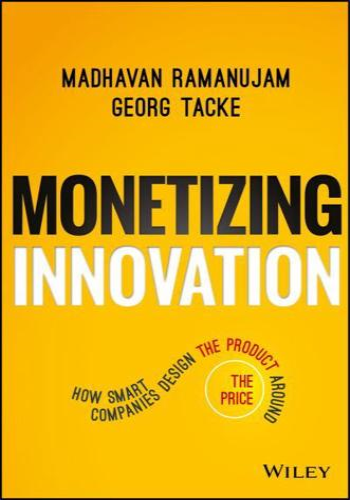Surprising rules for successful monetization
Innovation is the most important driver of growth. Today, more than ever, companies need to innovate to survive. But successful innovation-measured in dollars and cents-is a very hard target to hit.
Companies obsess over being creative and innovative and spend significant time and expense in designing and building products, yet struggle to monetize them: 72% of innovations fail to meet their financial targets-or fail entirely. Many companies have come to accept that a high failure rate, and the billions of dollars lost annually, is just the cost of doing business.
Monetizing Innovations argues that this is tragic, wasteful, and wrong.
Radically improving the odds that your innovation will succeed is just a matter of removing the guesswork. That happens when you put customer demand and willingness to pay in the driver seat-when you design the product around the price. It's a new paradigm, and that opens the door to true game change: You can stop hoping to monetize, and start knowing that you will.
The authors at Simon Kucher know what they're talking about. As the world's premier pricing and monetization consulting services company, with 800 professionals in 30 cities around the globe, they have helped clients ranging from massive pharmaceuticals to fast-growing startups find success. In Monetizing Innovation, they distil the lessons of thirty years and over 10,000 projects into a practical, nine-step approach. Whether you are a CEO, executive leadership, or part of the team responsible for innovation and new product development, this book is for you, with special sections and checklist-driven summaries to make monetizing innovation part of your company's DNA. Illustrative case studies show how some of the world's best innovative companies like LinkedIn, Uber, Porsche, Optimizely, Draeger, Swarovski and big pharmaceutical companies have used principles outlined in this book.
A direct challenge to the status quo "spray and pray" style of innovation, Monetizing Innovation presents a practical approach that can be adopted by any organization, in any industry. Most monetizing innovation failure point home. Now more than ever, companies must rethink the practices that have lost countless billions of dollars. Monetizing Innovation presents a new way forward, and a clear promise: Go from hope to certainty.






